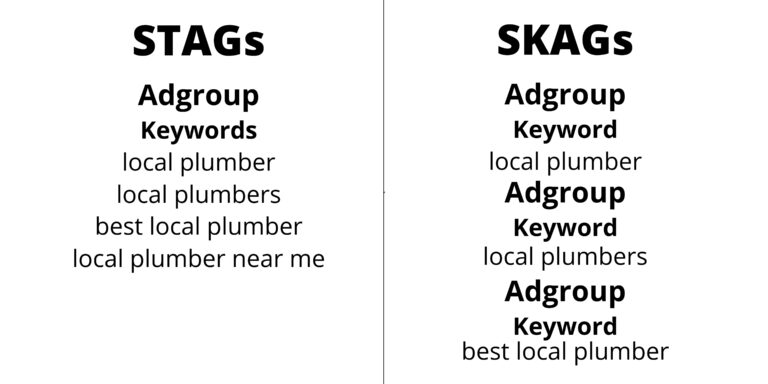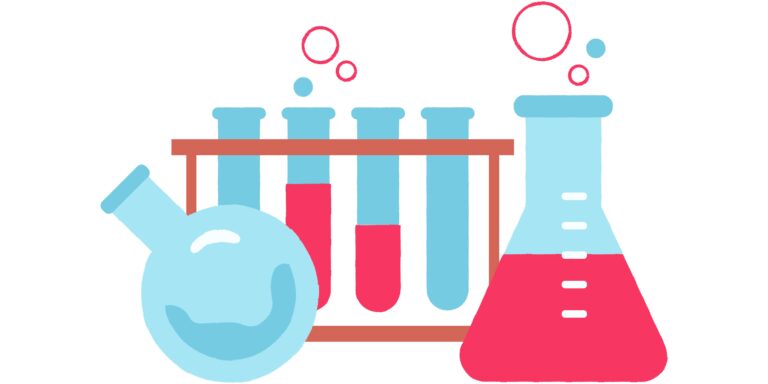STAGs Vs SKAGs In Google Ads

Anyone who has been working in Google Ads for a while will be very familiar with the ongoing evolving recommendations of the ideal adgroup structure.
We all know dumping all of your keywords into a singular adgroup is a big no no. That’s when SKAGs were born. SKAGs being single keyword adgroups, this is essentially where you assign one keyword per adgroup.
The idea behind SKAGs is they were an effective and organized way to cater your ads more towards your targeted keyword. This is because you are only associating your ads within your adgroup with a singular search query, rather than multiple.
SKAGs not only allowed you to improve ad to keyword relevance, but they also gave you the flexibility to personalize your messaging more toward the user and their query, positively impacting click-through rate.
However, as of the last year or so it appears that the once beloved and go-to adgroup structure has now become one that PPC account managers recommend we steer clear from. But why?
With the advancements of machine learning and automation, it’s now speculated that SKAGS are actually TOO TARGETED. In some instances this compact targeting approach can actually work against Google’s machine learning, especially when you are using automated bidding strategies.
This leaves some SKAGs enthusiasts scratching their heads thinking, “what else can we do?”
That’s where STAGs come in…
What Are STAGs?
STAGs are Single Topic Adgroups, this means you group keywords that are of the same topic within an adgroup.
It’s said amongst the PPC community that this approach allows you to still cater your messaging around the user and their query whilst complementing Google’s algorithm and machine learning. When tested in conjunction with SKAGs, advertisers have even stated the STAGs setup improved important metrics such as CTR, impression share and CPA.

Testing a new campaign layout can be scary but is definitely beneficial, which is why we have listed some key recommendations to get you started.
Run Campaign Experiments

When making any major campaign changes, testing them as a/b campaign experiments first is always the safest approach. This allows you to run the necessary testing without directly impacting your original campaigns. If your experiments work, you can simply apply them, if they don’t, you can end them and your old campaign will continue to work as before.
Remember That This Is Not A One Size Fits All Solution

Just because it’s a recommended strategy, it doesn’t mean it’s going to be the best strategy for you. Different accounts and businesses require a different level of targeting whereby some industries require a more narrowed approach due to varying factors relevant to competitors, CPA targets, higher potential of irrelevant click generation.
If this approach doesn’t work for your industry, that’s ok, what’s more important is being open to testing. Without testing, you won’t know what works best for you.
Think About The User
A common mistake when grouping keywords into a STAGs format is neglecting the meaning of “single topics” this causes advertisers to ineffectively group their keywords. Whilst this approach is less targeted and precise than Single Keywords adgroups, it’s still important to consider the user who will be seeing your ad. In fact, it’s more important with this approach.
When grouping your keywords, really think about the users intention when they are searching that term and how your ads can best cater to it.
Always be open to testing and listening to new ideas. In this evolving world of tech, don’t rely on one approach for too long.


